Controlling Complex Processes in Hazardous Zones 1/21 Using Decentralised Electrical & Pneumatic Systems & Fieldbus Comms
10th July 2009
Source:
Burkert Fluid Control Systems
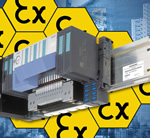
Working with volatile liquids and gases is an everyday occurrence in pharmaceutical and chemical industries, often involving hazardous: i.e. explosive, atmospheres (ATEX rated 1/21). Historically, this has meant that control cabinets combining electrical and pneumatic devices could not be used in these areas. This was due to the risk of corrosion of electrical parts, which could subsequently cause an explosion. Today, a new solution permits the combination of electrical and pneumatic devices with Fieldbus communications, even in zone 1/21 environments. Developed by Burkert, this combines the company’s AirLINE Ex 8650 system with modules from the intrinsically safe SIMATIC ET 200iSP system from Siemens. It provides users with a complete ATEX certified unit for use in zone 1/21, achieving cost savings by delivering substantial reductions in cabinet space, wiring, documentation and validation.
Until recently, combining electrical and pneumatic devices in control cabinets in zone 1/21 environments was impossible due to the wet and oily compressed air, which caused corrosion and short circuits. Today, however, compressed air systems usually work with air qualities with a pressure dew point below -20 degrees C (residual moisture of 0,88 g/m cubed) and an oil concentration of less than (1 mg/m cubed). Moreover, in the Pharmaceutical and Food and Beverage sectors one can expect even better compressed air quality; by several orders of magnitude. The quality of the exhausted compressed air is in fact so good that it can be channelled into the control cabinet in order to prevent humidity or dust within the ambient air from entering the cabinet. With this arrangement a pressure release facility or exhauster is, of course, necessary.
Whilst working with dry and oil-free air reduces the problem of corrosion and short circuits, there is still a detonation risk that remains due to the process conditions. In zone 1/21 hazardous areas , the pneumatic control of cylinders and pneumatic actuators is generally achieved with either discrete explosion-proof valves, directly mounted to the actuator, or Ex-proof valve banks wired to a remote-I/O-system. Installing the pilot valves in a safe area is a further option – although often not possible as the large distances between valves and actuators lead to unacceptably long switching times.
However, connecting sensors and actuators to bus systems substantially reduces the wiring effort. The use of advanced Profibus DPV1 communications relieves the control engineer of the task of installing the many special expensive electrical junctions and terminations required by conventional field wired systems in ATEX areas. It also offers additional major benefits, including a more compact control system, a more ‘close-to-the-process’ installation, simplified documentation, minimal power consumption, and, hence, significant cost savings.
In addition, the new ex-proof electro-pneumatic automation system offers another important advantage: all elements, valves (etc) are harmonised and certified. This means that users do not have to provide evidence of the safety of the system. Instead, Burkert provides a certificate covering the complete control cabinet, enabling users to guarantee that all devices and elements are consistent to EN 60079 part 0/1/7/11/26 and EN 60529:
As Burkert’s AirLINE Ex 8650 unit is fully certified, it can be used in explosion-hazard areas with gas or dust atmospheres. The system is particularly suited to decentralised process control tasks concerning fine chemicals, pharmaceuticals and cosmetics; and it can be employed anywhere where solvents, alcohol or lacquers are utilised. It can even be installed for direct factory automation: e.g. for the automatic filling of solvents, alcohol or lacquers. In these application areas, the new system is unique; in so far as it is the only compact electro-pneumatic automation solution allowing integration of EExia pneumatic valves without additional wiring.
Standardised interfaces and a highly flexible and modular design guarantee a fast and easy system-setup and allow pneumatic, electric and electronic modules with diverse functions to be combined with each other. The system allows up to 48 Burkert EExia solenoid valves to be seamlessly combined with Siemens ET200iSP EExia/ib electronic digital and analogue I/O modules in single distributed I/O assemblies. These offer extensive facilities for remote parameter setting and diagnostics, the ability to “Hot -Swap” valves and electronic I/O modules under Ex- conditions, and the facility for easy system expansion at a later date. The pilot valves integrated in the pneumatic modules allow a wide range of different actuators to be controlled in the field: e.g. process valves or pneumatic cylinders; explosion protection being guaranteed through electronic limitation of voltage and current.
Whilst working with dry and oil-free air reduces the problem of corrosion and short circuits, there is still a detonation risk that remains due to the process conditions. In zone 1/21 hazardous areas , the pneumatic control of cylinders and pneumatic actuators is generally achieved with either discrete explosion-proof valves, directly mounted to the actuator, or Ex-proof valve banks wired to a remote-I/O-system. Installing the pilot valves in a safe area is a further option – although often not possible as the large distances between valves and actuators lead to unacceptably long switching times.
However, connecting sensors and actuators to bus systems substantially reduces the wiring effort. The use of advanced Profibus DPV1 communications relieves the control engineer of the task of installing the many special expensive electrical junctions and terminations required by conventional field wired systems in ATEX areas. It also offers additional major benefits, including a more compact control system, a more ‘close-to-the-process’ installation, simplified documentation, minimal power consumption, and, hence, significant cost savings.
In addition, the new ex-proof electro-pneumatic automation system offers another important advantage: all elements, valves (etc) are harmonised and certified. This means that users do not have to provide evidence of the safety of the system. Instead, Burkert provides a certificate covering the complete control cabinet, enabling users to guarantee that all devices and elements are consistent to EN 60079 part 0/1/7/11/26 and EN 60529:
As Burkert’s AirLINE Ex 8650 unit is fully certified, it can be used in explosion-hazard areas with gas or dust atmospheres. The system is particularly suited to decentralised process control tasks concerning fine chemicals, pharmaceuticals and cosmetics; and it can be employed anywhere where solvents, alcohol or lacquers are utilised. It can even be installed for direct factory automation: e.g. for the automatic filling of solvents, alcohol or lacquers. In these application areas, the new system is unique; in so far as it is the only compact electro-pneumatic automation solution allowing integration of EExia pneumatic valves without additional wiring.
Standardised interfaces and a highly flexible and modular design guarantee a fast and easy system-setup and allow pneumatic, electric and electronic modules with diverse functions to be combined with each other. The system allows up to 48 Burkert EExia solenoid valves to be seamlessly combined with Siemens ET200iSP EExia/ib electronic digital and analogue I/O modules in single distributed I/O assemblies. These offer extensive facilities for remote parameter setting and diagnostics, the ability to “Hot -Swap” valves and electronic I/O modules under Ex- conditions, and the facility for easy system expansion at a later date. The pilot valves integrated in the pneumatic modules allow a wide range of different actuators to be controlled in the field: e.g. process valves or pneumatic cylinders; explosion protection being guaranteed through electronic limitation of voltage and current.
Similar articles
More from Burkert Fluid Control Systems
- Continuous water quality analysis for boreholes 6th July 2020
- Controller delivers precision microlitre dosing 14th May 2020
- Multi-medium testing facility for fluidic components 19th March 2020
- Micro precision for time-pressure dosing 10th December 2019

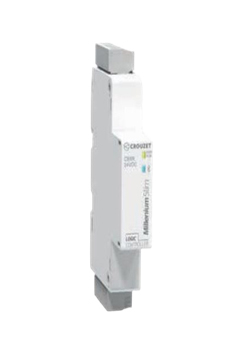
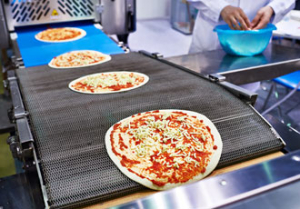
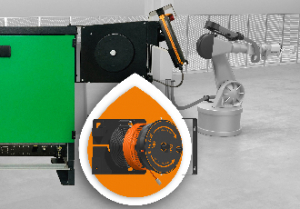
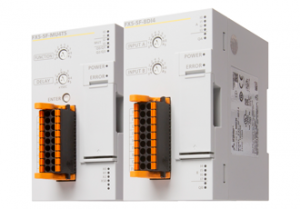







Write a comment
No comments